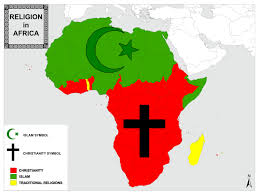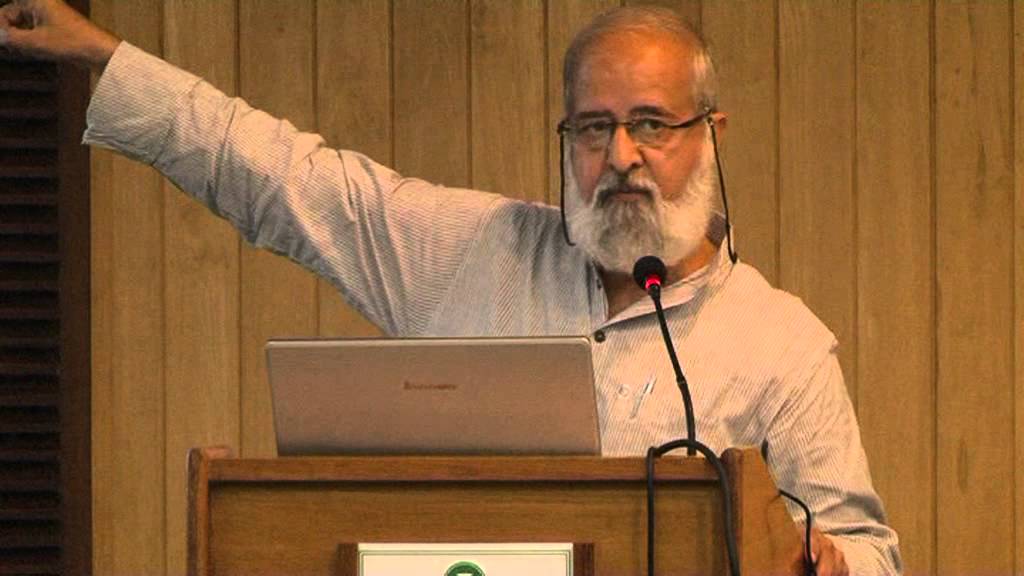
African traditions as an antidote to Judeo-Christian and Islam exclusivism: A reading of Wole Soyinka’s of Africa
Wole Soyinka explores the concept of exclusivism in his book Of Africa.[1] Although he does not explicitly define what exclusivism means, we can deduce from his discussions that the term implies ideas that tend to create an ‘ingroup and outgroup.’ In Africa, those ideas range from notions of geography, boundaries, race, religion, migration, and ideology. These ideas are epitomized by what he refers to as “fictioning of Africa.” In Part One of the book, he examines four types of narratives that fictionalize Africa. These narratives written by foreigners as well as writers from the continent include (i) narratives of travelers and adventurers, (ii) narratives of traders, (iii) narratives of internal, power-driven fictioning by post-independent rulers, and (iv) revisionists narratives, driven by a desire to correct history. In Part Two of the book, he discusses African religions as an antidote to exclusivity.
Fictioning Africa
Travel narratives or travelogues defined Africa in a way that excluded it from the rest of the world. Soyinka points out that although Africa appears to have been known or spoken about in ancient writings, “no travel narrative has come down to us that actually lays personal or racial claim to the discovery of the continent” (27). This perhaps explains some of the ignorance or prejudice one reads in most travel literature about Africa. There seems to be a lack of complete knowledge about Africa. Hence, writers including African themselves often misrepresent Africa because rely on inaccurate travel accounts to construct their arguments.
Narratives of trade or commerce focus on the encounter of Africa with various traders from around the world. Soyinka does not take slavery as a departing point for discussing trade in Africa. Neither does he strictly focus on slavery as an idea of
Of course, not all challenges in Africa can be traced to the demarcation of boundaries, as Soyinka points out, ideology is also crucial in understanding some of the problems affecting the continent. The cold war between the capitalist First World and communist Second World turned Africa into a playfield with catastrophic consequences. For instance, dictators such as Siad Barre of Somalia, a country with a single dominant religion and people of similar ethnicity, continued to massacre their own people because they received support from Russia and at some point, the West.
African writers have tried to move past the tragic history of Africa, but Soyinka argues that these writers ignore historical realities and tend to wish the past away. He counsels that Africa must confront the past because therein lie the roots of contemporary problems in the continent. He portrays South Africa and Sudan as countries that have glossed over race issues instead of tackling them. He particularly singles out Sudan as a case where racism has mostly informed government policies that exclude large populations in the country. For instance, the long civil war that ended with the succession of South Sudan was fought along racial lines – the Arabicized north against the Black south. The more recent violent conflict in Darfur where an ethnic cleansing militia, Janjaweed (which Soyinka compares with Ku Klux Klan in the US), backed by Sudanese government has sought to eradicate an entire ethnic group, is also a product of historical racism.
Soyinka sees these events in Sudan as a replay of the history of slavery whose roots were planted during the era of slave trade. As he points out, “those who wish to understand the undercurrents of the mind that breed and nurture the inhuman conduct of the Sudanese government against his own populace, notably now the people of Western Sudan, the Fur, would do well to take good note of the role of history in this scenario” (83). Interestingly, African traders were cognizant of the fact that the past acts upon the present. Thus, they enacted different rituals such as forcing slaves to circle the “Tree of Forgetfulness” so as to forget about their homeland and their captors. But the ubiquity of contemporary conflicts of exclusion in the continent reveals the futility of these rituals.
My view is that Soyinka presents these ideas of exclusivity – how Africa has been conceptualized and articulated in a manner that excludes it from the rest of the world – as a foreground for discussing African religions as an antidote to exclusivity. As he argues, “African religions did not aspire to conquer the world” (25) or proselytize like Christianity or Islam. On the contrary, African religions are naturally accommodative and do not seek to dominate – they possess characteristics that shun exclusivity.
African religion as an antidote to exclusivity
Soyinka presents contemporary challenges and opportunities in Africa as a dialogue of different encounters between African, Islam, and Christian traditions, ideas that resonate with other scholars such as Edward Blyden, Kwame Nkrumah, and Ali Mazrui. These ideas were first articulated by Edward Blyden, a Pan-Africanist and a Liberian politician, in his book, Christianity, Islam and the Negro Race,[2] and they were later developed by another pan-Africanist and founding president of Ghana, Kwame Nkrumah. In his book, Consciencism, Nkrumah traces the origin of contemporary African religious heritage to three major forces: Indigenous traditions, Islam, and Euro-Christian impact.[3] Ali Mazrui expounds and propagates these ideas with great eloquence, passion, and persistence. In fact, most of his writings are informed by this worldview, which he calls “Triple Heritage”.[4] For Blyden, of the Judeo-Christian and Islam traditions, Islam appears as a favorable religion for Black people. He argues that Islam in its true observance, “extinguishes all distinctions founded upon race, color, or nationality” (92). Mazrui in his seminal work, The Africans: A Triple Heritage, explains that contemporary Africa’s triple heritage is composed of indigenous, Islamic and Christian legacies and that indigenous African religion is the most tolerant of the three religions. He attributes this to the communal nature of indigenous religions, which is different from either Islam or Christianity – the two religions are universalist in aspiration and are always seeking to convert others. Mazrui presents Nigeria and Sudan as the best embodiments of this heritage.[5] But this was before Sudan started its 30-year-old civil war, and Nigeria became a hotbed for Boko Haram terrorist activities.
Soyinka is likely to disagree with Blyden’s conclusions that Islam is an accommodative religion. The discussion on Sudan, Mauritania, and Ivory Coast
Soyinka is opposed to any religion that considers itself superior to others and thus “denigrates other people’s past in whom the present is very much rooted” (83). It is then clear what Soyinka is attempting to accomplish in Of Africa: At one level, he wants to redress what he considers as appalling ignorance and misrepresentation of the African continent through elevating its gods, and at another level, he wants to celebrate these gods as an elixir against exclusivity. He extends these arguments in an essay on “Religion Against Humanity,” published in Granta, whereby he points out that “adherents of African religions who remain passionately attached to their beliefs all the way across the Atlantic – Brazil and across other parts of Latin America – have not taken to wreaking vengeance on their presumed violators (Christianity and Islam) in far-off lands”[8] (the added emphasis is mine).
Conclusion
Soyinka does more than present African religions as a panacea for religious fundamentalism exposed by the dominant religious traditions of Christianity and Islam. He comprehensively discusses Orisa, Yoruba religion and its place among the Yoruba people of Nigeria and those in the African diaspora. Orisa is an epitome of the accommodative spirit that Soyinka drums up support for.
It is likely that a different reading of Soyinka’s book might interpret his ideas as exclusionism. My view is that the comprehensive exploration of Yoruba religions and how they functioned in the society are meant to wade against [?] such a reading. The point here is that a religion that accommodates others is desirable to one that excludes.
Bibliography
[1] Soyinka, W (2012). Of Africa. New Haven: Yale University Press.
[2] Blyden, E (1967). Christianity, Islam and the Negro Race. 3rd Edition. Edinburgh: University of Edinburgh Press.
[3] Nkrumah, K (1970). Consciencism: Philosophy and Ideology for De-colonization. London: Panaf Books Ltd.
[4] Adem, S. “Ali A. Mazrui, the Postcolonial Theorist” African Studies Review, 57 no. 1 (2014), pp. 135-152.
[5] Mazrui, A (1986). The Africans: A Triple heritage. Toronto: Little, Brown & Company.
[6] Soyinka, W. Religion and Human Rights, Index on Censorship, (1991), (5)88, pp. 82-85
[7] Ali Mazrui conceived “The Africans: A Triple Heritage,” as a Television series that aired on PBS, and was later published as a book by the same name.
[8] Soyinka, W. Religion Against Humanity, Granta (2012). 122



